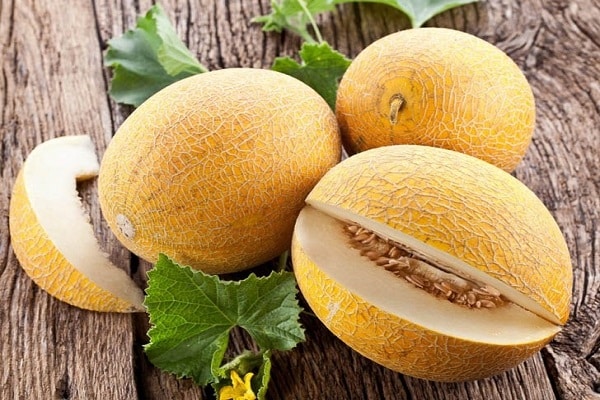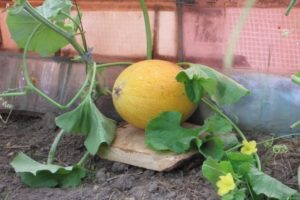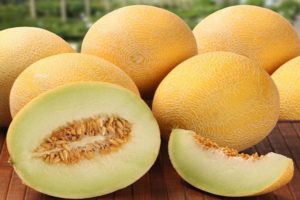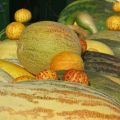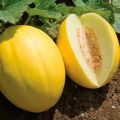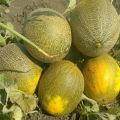Why can melons have orange flesh inside, what kind of varieties are they?
We are all used to seeing white or creamy melon pulp in the markets. But many do not know that there are hybrids of melons with orange pulp, like pumpkin. Among such varieties are Princess Maria melon, which we will now learn more about.
Melon princess Maria
It is grown mainly in greenhouses in central Russia. In the hot climate of Russia, they grow in open beds. Usually grown in Central Asia, as the hot sun shines there, which melons are very fond of.

The variety is early maturing. Outwardly, the melon is gray-green, inside it is orange. The taste is sweet, the pulp is juicy and sweet, has a bright nutmeg smell. Even when grown in unfavorable weather conditions, the variety gives a high yield. The shape is round, close to ovoid, the fruits ripen up to 1.5 kilograms. It is highly resistant to disease. Intended to be eaten immediately after collection. Not subject to storage.
Why is the flesh orange inside?
In such melons, orange pulp inside is due to the high content of beta-carotene or provitamin A, which is responsible for the youth of the body, the renewal of old cells and the cleansing of blood vessels from atherosclerotic plaques. It is used to improve vision, male potency, protects the skin from ultraviolet rays. But it is not recommended for diabetics to use, as the pulp contains a large amount of sugar.
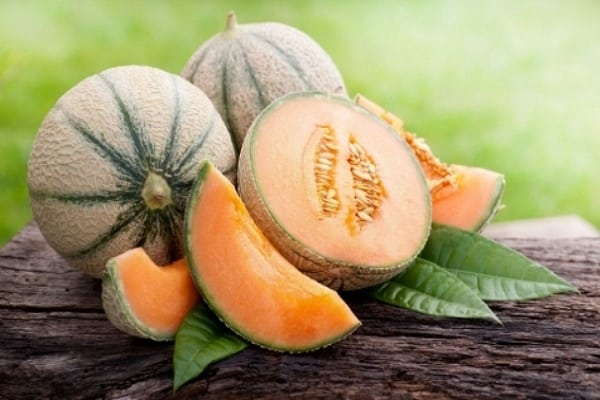
In addition to provitamin A, melon is rich in trace elements such as:
- ascorbic acid or vitamin C;
- folic acid;
- potassium;
- silicon;
- manganese;
- iodine;
- retinol;
- iron;
- tocopherol;
- riboflavin;
- chlorophyll.
All these trace elements, when consumed fresh, help to cope with diseases, renew body cells, cleanse the walls of blood vessels and help strengthen immunity. Since they have a sweet taste, melons are loved not only by adults, but also by children. Their growing body needs vitamins and minerals for harmonious development.
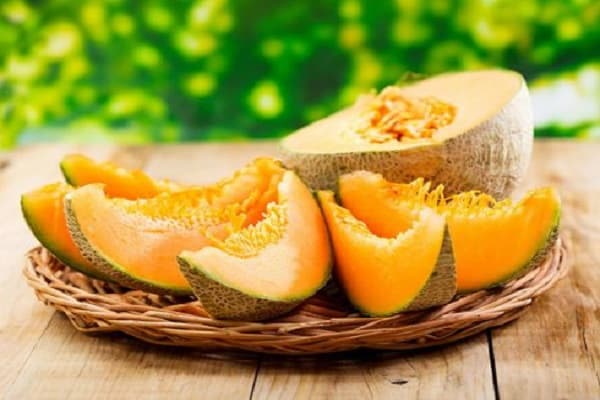
Other melons with orange flesh
In addition to Princess Mary, a huge number of varieties of melons with different pulp colors are grown:
- green;
- white;
- yellow;
- orange blossom;
- creamy.
There is also a large number of exotic fruits of various shapes:
- cucumber;
- banana;
- horned;
- serpentine.
All these varieties are united by the name - melon.
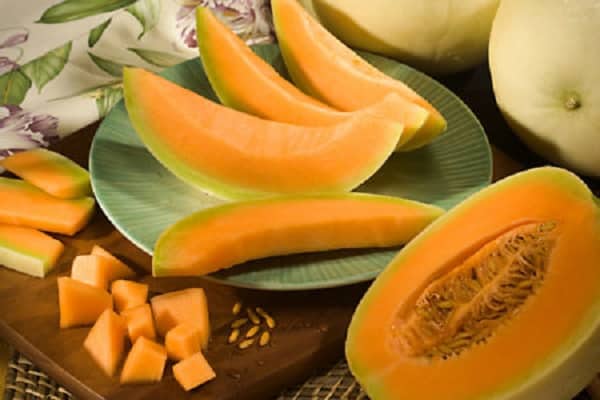
Contaloupe
The fruits are grown in Asia. The mass depends on the variety and varies from 600 grams to 2 kilograms. The second name of the variety is nutmeg... The fruits have a roundish green color with a gray tint. The flesh of the melon is rich orange inside. At higher levels of beta-carotene, the color is darker. The pulp is juicy, dense. The amount of sugar in the fruits of this variety is less than in other Asian varieties.
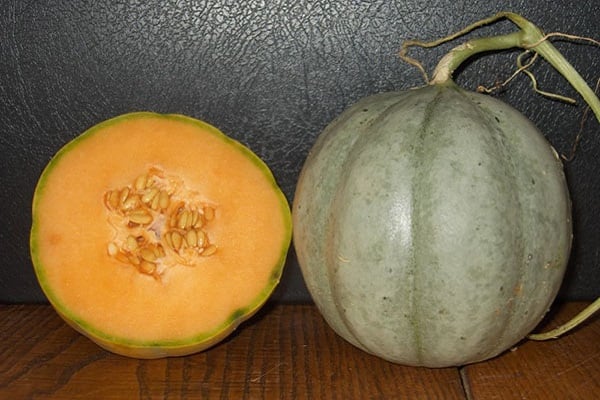
Charente
Small French fruits are early-maturing hybrids. The pulp is deep orange in color. The peel is yellow-gray with green stripes. It is grown everywhere, including in the Russian Federation. When grown, it does not require special conditions, it gives good yields.

Iroquois
Produced by breeders on the basis of Cantaloupe fruits, medium ripening, high yielding. Resistant to fusarium and powdery mildew diseases.
From germination of seeds to obtaining ripe vegetables, under favorable growing conditions, 80 days pass. The berries grow up to 1.7 kilograms in weight. The skin is dense and firm. When ripe, light green, then gray, with a convex ornament over the entire surface. The pulp of the fruit is juicy, dense, orange in color. Has a sweet taste.
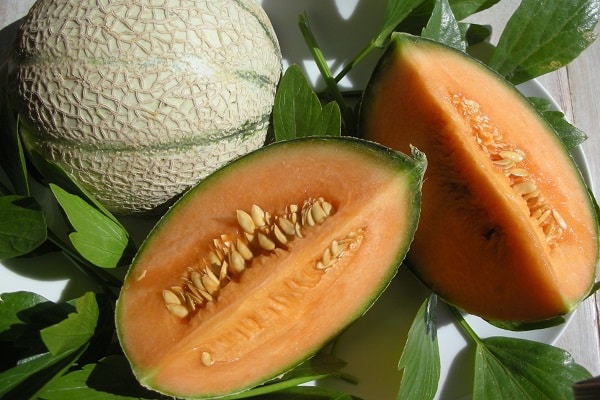
Orange
Russian breeders have bred the Orange variety. It has an average ripening period, is distinguished by its productivity and rapid growth of lashes. When ripe, the fruits reach a size of 1.6–2 kilograms. They are grown in the southern part of the country in open beds; in Siberia, seeds are grown in seedlings, otherwise they will not have time to ripen. The skin is firm, with ornaments on the entire surface and longitudinal green stripes. The main color is gray-yellow. The melon pulp is orange, juicy, with a pleasant melon smell.
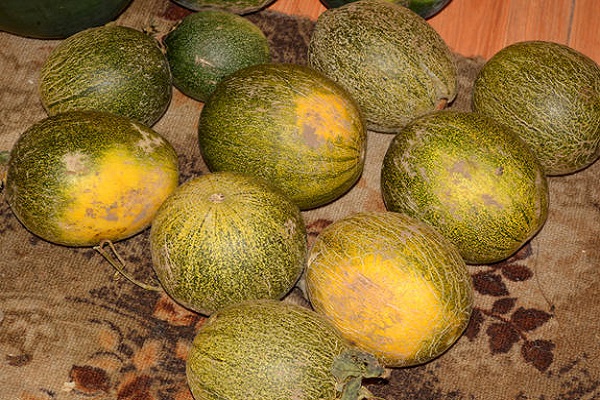
Charlotte
From planting seeds to ripening of fruits, 85 days pass, the variety is medium early. Grown in open beds or in greenhouses on a trellis. The fruits are orange on the inside and outside. The pulp of a ripe fruit is bright orange in color, juicy. When the fruit is fully ripe - sugar and melting in the mouth.

Portent
An early ripe hybrid for growing in greenhouses and open beds. The bush is powerful, resistant to popular diseases. The berries reach a size of 1.3–1.5 kilograms. The juicy and dense inside has a rich sweet taste and melon aroma. The color of the melon pulp is orange, the skin is light gray with a yellow tint and green stripes along the berry. A relief mesh with an ornament runs over the entire surface.
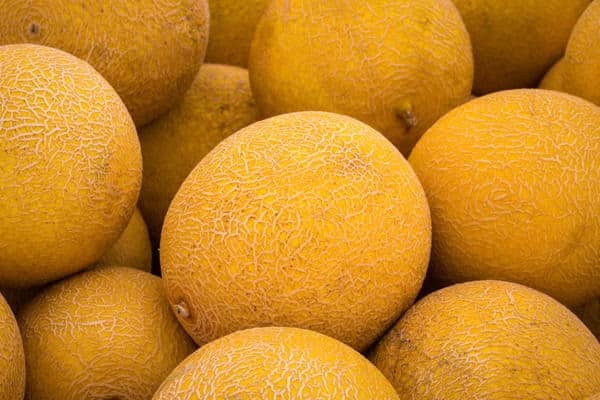
Altai
The variety is suitable for growing in the northern regions of Russia, often used for growing in the Urals. The variety is unpretentious to growing conditions and care. Differs in early ripening. Round melons grow up to 2 kilograms under favorable conditions. Skin color is gray with a green tint. The pulp is orange, juicy and firm. It has a melon aroma. Disease resistant when grown in humid conditions.
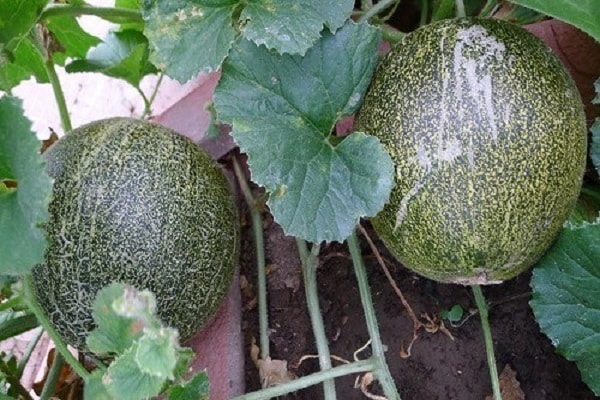
Who is the use indicated for?
The benefits of eating melon have been proven for the following diseases:
- cardiovascular pathology;
- for colds, flu and viral infections;
- to relieve nervousness during stress and neurosis;
- with diseases of the genitourinary system;
- with constipation, hemorrhoids, diseases of the digestive system;
- anemia;
- disorders of the gallbladder and kidneys;
- relieves the body of worms.
The silicon content has a positive effect on the formation of nail plates, hair, improves digestion, and helps to improve mood.

When can you not eat a melon?
If the following diseases are detected, this berry cannot be eaten:
- Acute form of disease of the biliary tract, genitourinary organs, the presence of stones or sand in the gallbladder or kidneys.
- An acute form of inflammation of the pancreas.
- With gastric ulcer, gastrointestinal tract infection, gastritis, with inflammation of the rectum.
- If a pre-diabetic condition or diabetes mellitus is detected.

How to grow a variety on the site?
It is very easy to grow melon varieties in the garden.But if a cold snap quickly sets in in the region, then it is better to use the method of growing through seedlings, followed by transplanting the plants into a greenhouse.
The seeds are germinated in wet gauze, then planted in containers for seedlings. The soil is chosen fertile, loose. For better germination, the seeds are covered with a film until the first shoots appear. Then the film is removed, the containers are placed in a well-lit and warm place for further growth.
When the temperature in the room where melons are planned to be planted reaches 22-25 degrees, and the soil warms up to at least 15 degrees, the seedlings are transplanted. In greenhouses, melons grow on a trellis, in beds in a horizontal manner. 4 plants are planted on one square meter.
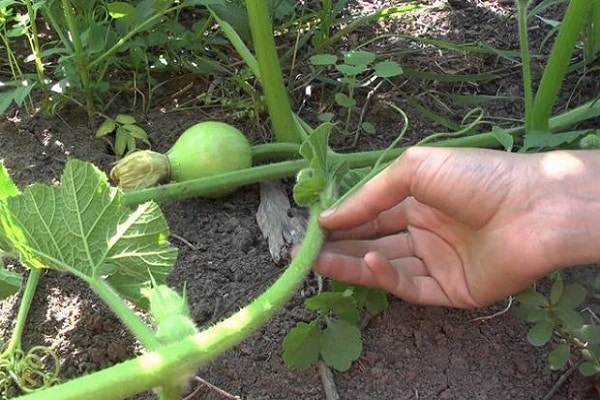
Melon requirements for growing conditions
Since the berries came to us from hot and sunny Asia, India and other countries with a hot climate, we also require the presence of the sun. To ripen, they need at least eight hours of sunny day. Otherwise, the fruits will not ripen.
Plants are demanding for feeding. So, when growing, gardeners feed the crop at least three times with organic and mineral fertilizers.
Do not allow the soil to dry out, too humid environment is also dangerous for plants. Roots will rot. Everything needs moderate care, this is the key to obtaining a high-quality harvest of tasty and healthy melons in our climatic conditions.

Reviews of varieties of orange melons
Despite the exoticism of this fruit, the variety is successfully grown by gardeners in Russia and neighboring countries.
Nikolay speaks about cultivation as follows: “Last year the neighbors persuaded plant melon on the site, gave seeds and recommendations for growing. I planted it in an open garden bed, since my greenhouse is always busy with tomatoes and cucumbers. Grown in the usual way - planting seeds in the ground. The weather that year was disgusting, so at first the shoots did not germinate for a long time, and when active growth began, it began to get colder. Therefore, the fruits did not have time to ripen. I decided this year to plant a few melons in a greenhouse, I am already growing seedlings. I look forward to receiving good results. "

Marina: “I set aside a place specifically for growing melons and watermelons in a greenhouse. Last year, I received fruits weighing about 1.5 kilograms. She threw the scourge along the trellis, otherwise the ground cannot be seen because of the greenery. She planted the Charente variety. The melons are delicious, the pulp is juicy, dense, melts in the mouth. Therefore, I will plant melons in the garden this year. I will try to grow in an open area by growing seedlings. They say that the variety gives a good harvest in open beds as well.
Grigory: “I am from Belarus, our climate is cool, but summer is hot. So I decided to plant a melon in the garden. Moreover, grandchildren love these fruits for their sweet taste. I read a lot of books on growing melons, pumpkins also belong to them. Grown in seedlings, planted seeds at the same time as tomatoes. The seedlings of the house grew quickly, stood on the windowsill, where the sun shines for half a day. At the end of May, he transplanted into a garden bed, previously fed with a mullein. He looked after the rest of the plants: watered, loosened, weeded. Melons grew by a kilogram, 16 melons came out of eight plants. I was pleased with the harvest. The pulp was juicy, ripe, sweet, the grandchildren could not be torn from the beds. Everyone was waiting for him to grow up. "
